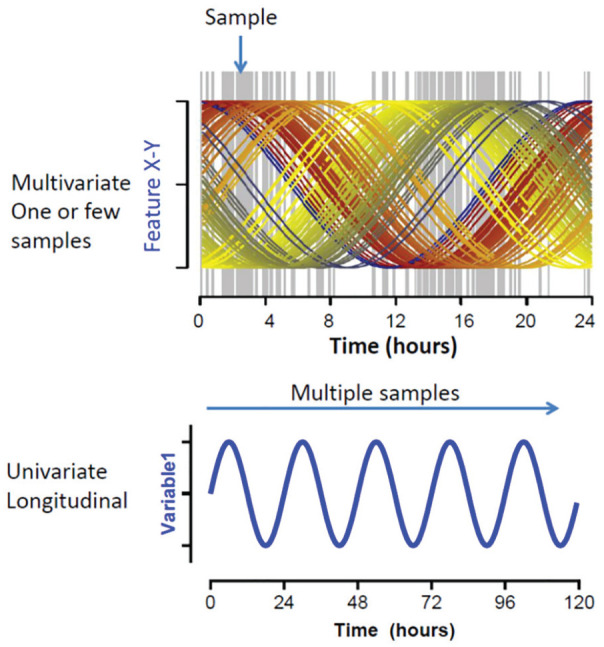Figure 3.

Univariate multiple sampling versus multivariate single sample. (A) A multivariate biomarker will require 1 or 2 samples separated by several hours, and by containing information about multiple rhythmic features, the relative level of each of those features can classify the overall circadian timing (Laing et al., 2017). (B) With a univariate biomarker, a time series of points assessing a single feature is collected. Depending on the variability of the feature, “noise” from periodic behaviors or physiologic changes and/or environmental changes may influence any 1 data point or cycle, but multiple cycles of data will provide an accurate assessment of the underlying rhythmic process.
